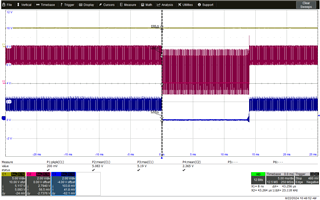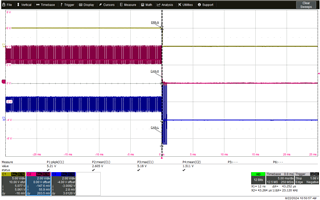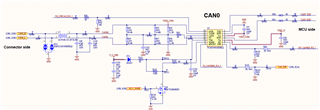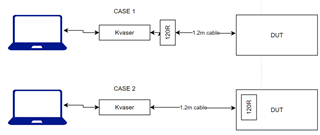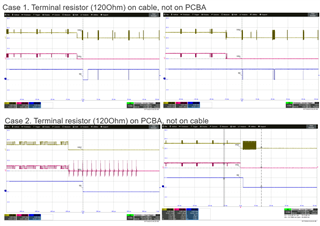Tool/software:
Hi TI expert,
I test with two cases: CAN_H shorted to GND (1) and CAN_L short to GND (2)
For each case I measure the nFAULT pin. For case (1), nFAULT changed state (expected - OK) but for case (2), nFAULT not change (Still High).
Follow the state diagram, I am make sure the IC in Normal state.
In the table 9-1, CANL shorted to GND, nFAULT =Low in normal mode only

(1) CAN_H short to GND
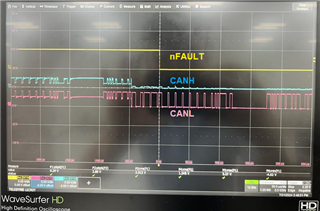
(2) CAN_L short to GND (Pink - C2 is nFault)
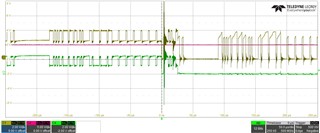
Question:
- Is test case (2) with expect nFAULT=L correct or not
- If correct pleas suggest to fix it.
Thanks.
--Tuong Pham



